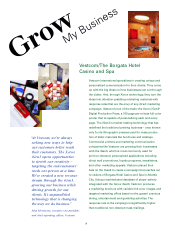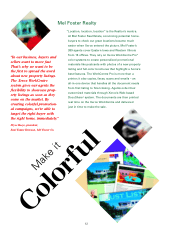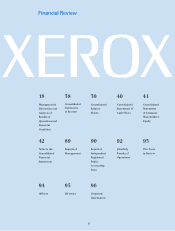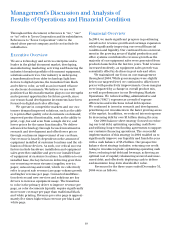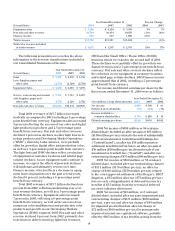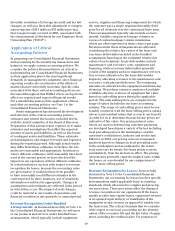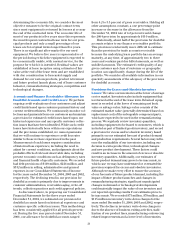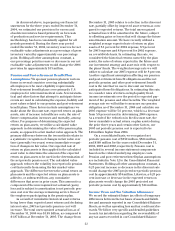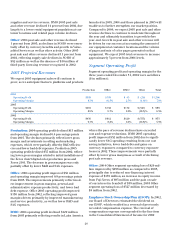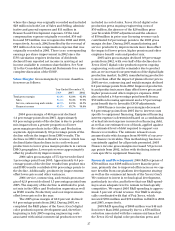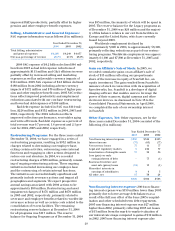Xerox 2004 Annual Report Download - page 20
Download and view the complete annual report
Please find page 20 of the 2004 Xerox annual report below. You can navigate through the pages in the report by either clicking on the pages listed below, or by using the keyword search tool below to find specific information within the annual report.
18
Throughout this document, references to “we,” “our”
or “us” refer to Xerox Corporation and its subsidiaries.
References to “Xerox Corporation” refer to the
stand-alone parent company and do not include its
subsidiaries.
Executive Overview
We are a technology and services enterprise and a
leader in the global document market, developing,
manufacturing, marketing, servicing and financing the
industry’s broadest portfolio of document equipment,
solutions and services. Our industry is undergoing
atransformation from older technology light lens
devices to digital systems, the transition from black
and white to color, as well as an increased reliance
on electronic documents. We believe we are well
positioned as this transformation plays to our strengths
and represent opportunities for future growth, since
our research and development investments have been
focused on digital and color offerings.
Weoperate in competitivemarkets and our cus-
tomers demand improved solutions, such as the abili-
ty to print offset quality color documents on demand;
improved product functionality, such as the ability to
print, copy, fax and scan from a single device; and
lower prices for the same functionality. Wedeliver
advanced technology through focused investment in
research and development and offset lower prices
through continuous improvement of our cost base.
Our revenue is heavily dependent on the amount of
equipment installed at customer locations and the uti-
lization of those devices. As such, our critical success
factors include hardware installation and equipment
sales growth to stabilize and grow our installed base
of equipment at customer locations. In addition to our
installed base, the key factors in delivering growth in
our recurring revenue streams (supplies, service,
paper, outsourcing and rental, which we collectively
refer to as post sale revenue) are page volume growth
and higher revenue per page. Connected multifunc-
tion devices and new services and solutions are key
drivers to increase equipment usage. The transition
to color is the primary driver to improve revenue per
page, as color documents typically require significantly
more toner coverage per page than traditional black
and white printing. Revenue per color page is approxi-
mately five times higher than revenue per black and
white page.
Financial Overview
In 2004, we made significant progress in positioning
ourselves for revenue growth and earnings expansion
while significantly improving our overall financial
condition and liquidity. Our continued focus on invest-
ment in the growing areas of digital production and
office systems contributed to revenue growth as the
majority of our equipment sales were generated from
products launched in the last two years. Total revenue
increased modestly, as equipment sales growth was
essentially offset by declines in post sale and other.
We maintained our focus on cost management
throughout 2004. While gross margins were slightly
below our targeted level, we continued to offset lower
prices with productivity improvements. Gross margins
were impacted by a change in overall product mix,
as well as performance in our Developing Markets
Operations. Wereduced selling, administrative and
general (“SAG”) expenses as a result of expense
efficiencies and reductions in bad debt expense.
Wecontinued to invest in research and development,
prioritizing our investments in the faster growing areas
of the market. In addition, we reduced interest expense
bydecreasing debt by over $1 billion during the year.
Our 2004 balance sheet strategy focused on reduc-
ing our total debt, optimizing operating cash flows
and utilizing long-term funding agreements to support
our customer financing operations. The successful
implementation of this strategy in 2004 enabled us to
significantly improve our liquidity and finish the year
with a cash balance of $3.2 billion. Our prospective
balance sheet strategy includes: returning our credit
rating to investment grade; optimizing operating cash
flows; reducing total debt and leverage; achieving an
optimal cost of capital; rebalancing secured and unse-
cured debt; and effectively deploying cash to deliver
and maximize long-term shareholder value.
Revenues for the three years ended December 31,
2004 were as follows:
Management’s Discussion and Analysis of
Results of Operations and Financial Condition


